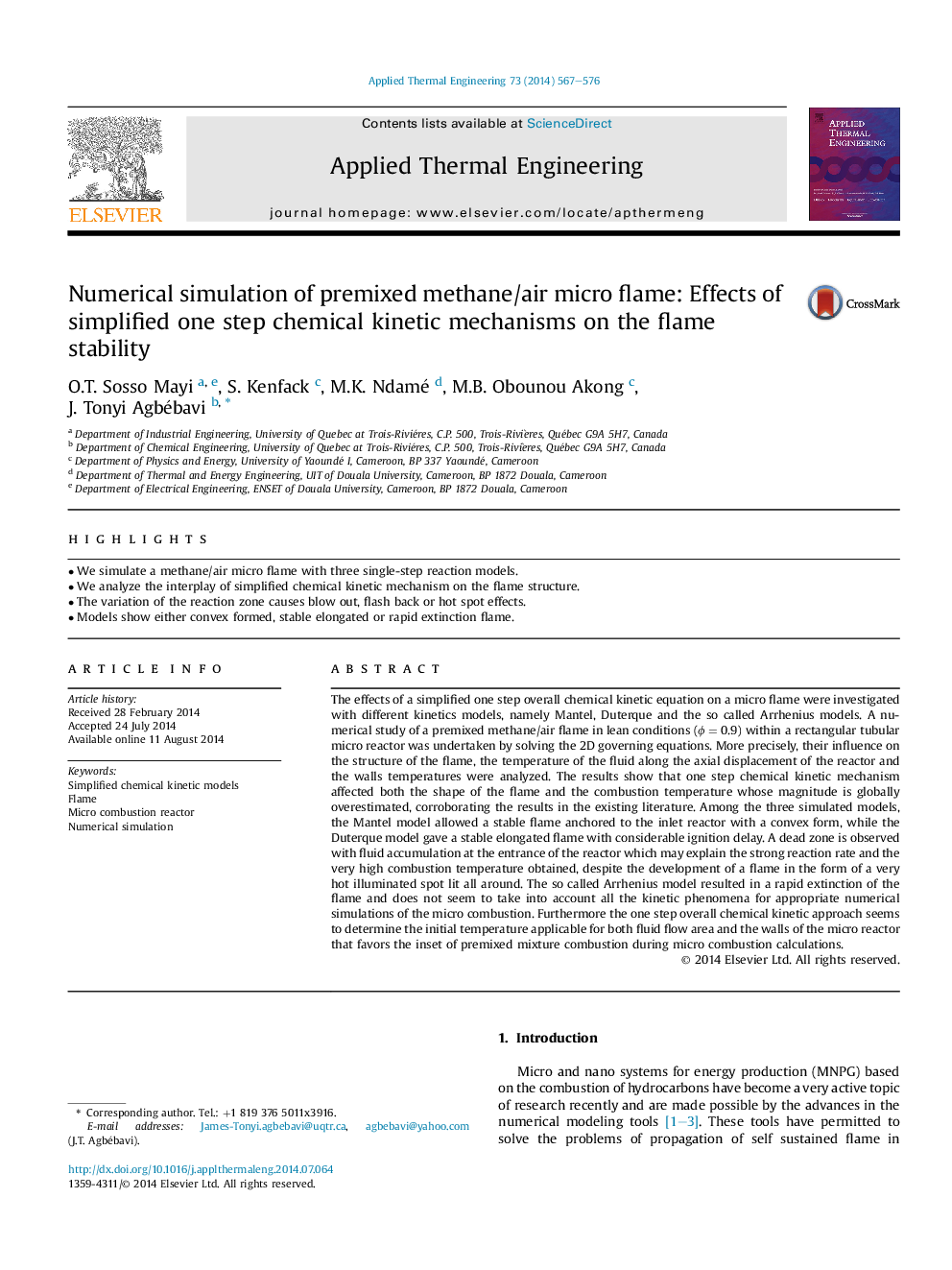| کد مقاله | کد نشریه | سال انتشار | مقاله انگلیسی | نسخه تمام متن |
|---|---|---|---|---|
| 645782 | 884545 | 2014 | 10 صفحه PDF | دانلود رایگان |

• We simulate a methane/air micro flame with three single-step reaction models.
• We analyze the interplay of simplified chemical kinetic mechanism on the flame structure.
• The variation of the reaction zone causes blow out, flash back or hot spot effects.
• Models show either convex formed, stable elongated or rapid extinction flame.
The effects of a simplified one step overall chemical kinetic equation on a micro flame were investigated with different kinetics models, namely Mantel, Duterque and the so called Arrhenius models. A numerical study of a premixed methane/air flame in lean conditions (ϕ = 0.9) within a rectangular tubular micro reactor was undertaken by solving the 2D governing equations. More precisely, their influence on the structure of the flame, the temperature of the fluid along the axial displacement of the reactor and the walls temperatures were analyzed. The results show that one step chemical kinetic mechanism affected both the shape of the flame and the combustion temperature whose magnitude is globally overestimated, corroborating the results in the existing literature. Among the three simulated models, the Mantel model allowed a stable flame anchored to the inlet reactor with a convex form, while the Duterque model gave a stable elongated flame with considerable ignition delay. A dead zone is observed with fluid accumulation at the entrance of the reactor which may explain the strong reaction rate and the very high combustion temperature obtained, despite the development of a flame in the form of a very hot illuminated spot lit all around. The so called Arrhenius model resulted in a rapid extinction of the flame and does not seem to take into account all the kinetic phenomena for appropriate numerical simulations of the micro combustion. Furthermore the one step overall chemical kinetic approach seems to determine the initial temperature applicable for both fluid flow area and the walls of the micro reactor that favors the inset of premixed mixture combustion during micro combustion calculations.
Journal: Applied Thermal Engineering - Volume 73, Issue 1, 5 December 2014, Pages 567–576